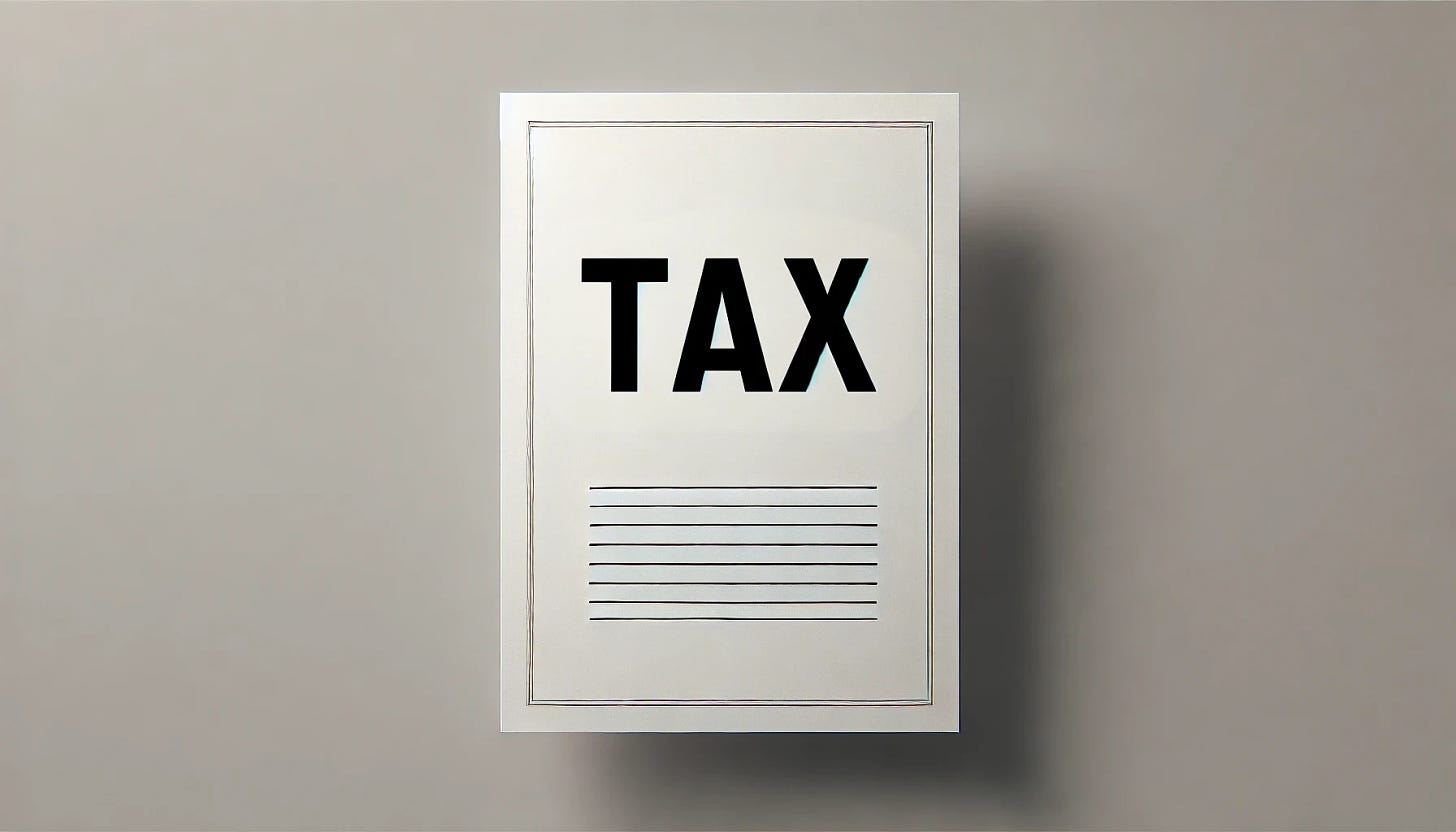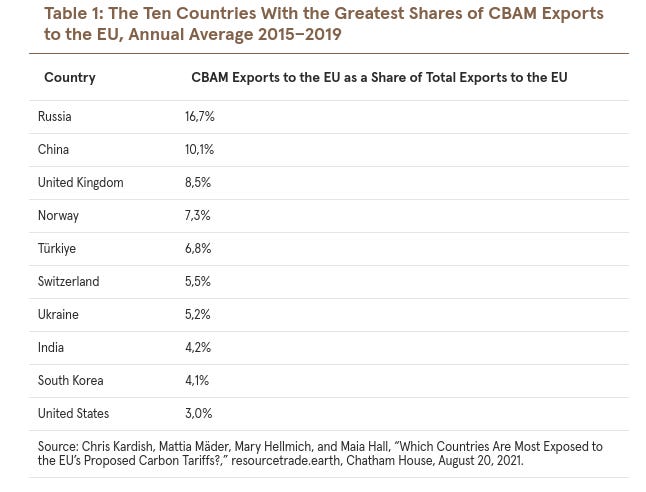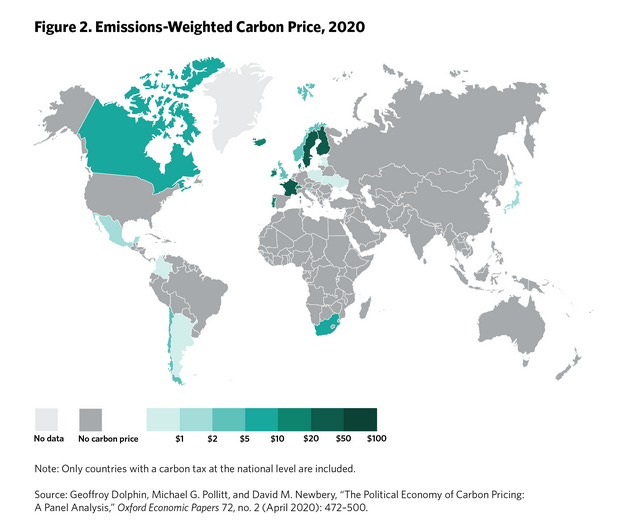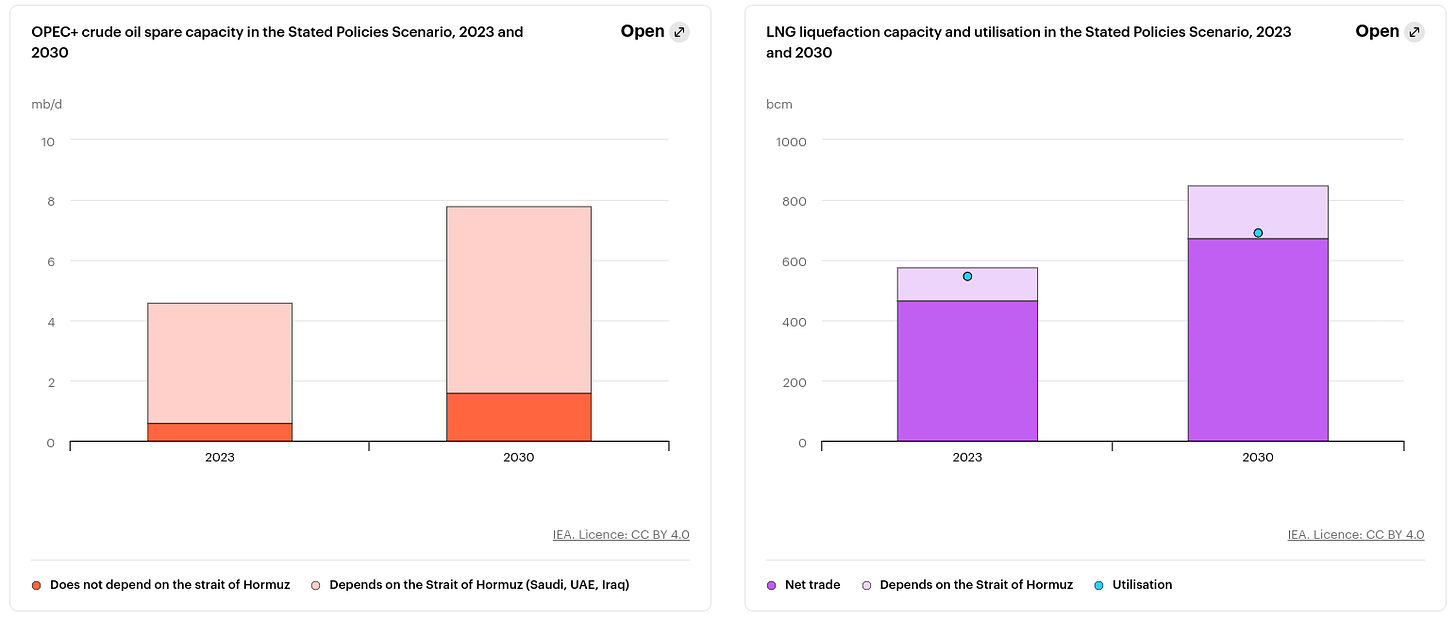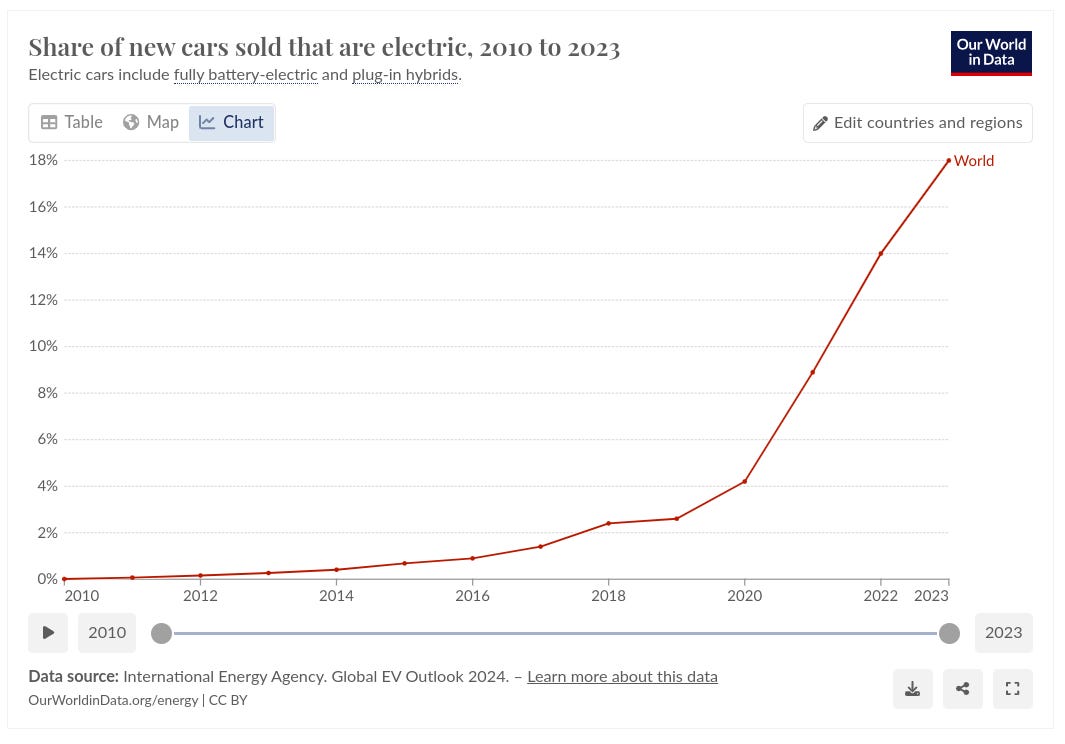Our goal with The Daily Brief is to simplify the biggest stories in the Indian markets and help you understand what they mean. We won’t just tell you what happened, but why and how too. We do this show in both formats: video and audio. This piece curates the stories that we talk about.
You can listen to the podcast on Spotify, Apple Podcasts, or wherever you get your podcasts and videos on YouTube. You can also watch The Daily Brief in Hindi.
Today on The Daily Brief:
- India has a CBAM problem
- Will Bajaj overtake Ola?
- Major trends in the energy sector
India has a CBAM problem
Climate change is one of the biggest problems we face today, and cutting down on carbon emissions is crucial to stop it from getting worse. Industrial activity is responsible for over 25% of global carbon emissions, and countries are trying different ways to tackle the problem. The European Union (EU) is taking one of the most ambitious steps with its new Carbon Border Adjustment Mechanism (CBAM) tax, which will be fully in place by 2026.
We know the word “tax” can make us tune out, but stay with us—this one could have big effects, especially for India. Let’s break down what CBAM is and why it matters.
CBAM is basically a tax on carbon-heavy goods that are imported into the EU, like steel, aluminium, cement, fertilizers, and electricity. The goal is to prevent something called “carbon leakage.” This happens when companies move their factories to countries with weaker environmental laws just to avoid paying carbon taxes. The EU wants to level the playing field by charging this tax on imported goods so that foreign companies have to pay the same price for their carbon emissions as EU-based companies do through the Emissions Trading System (ETS).
Here’s how it works: EU companies already have to pay for their carbon emissions through the ETS, a system where businesses buy carbon credits. These credits allow them to release a certain amount of CO₂; if they manage to emit less, they can sell the extra credits to other companies. It creates a financial incentive to reduce emissions. Now, CBAM will apply this idea to imports, so companies outside the EU, like those in India, will need to buy certificates to cover the emissions produced when making goods they sell to Europe.
For a big exporter like India, this is a big deal. Take steel, for example. If an Indian company like JSW Steel exports steel to Europe, they’ll have to buy CBAM certificates to cover the carbon emitted during production. Since India doesn’t have a carbon pricing system like the EU, this tax will make exporting steel to Europe more expensive, making Indian goods less competitive.
To give some perspective, in 2022, 27% of India’s steel, iron, and aluminum exports—worth $8.2 billion—were sent to Europe. Once CBAM is fully in place, these exports could face higher costs, and Indian companies might struggle to hold onto their share of the EU market.
Indian steelmakers like JSW and Tata Steel are already trying to prepare. JSW is investing in a green steel unit, and Tata Steel is working on cutting emissions through its power division, Tata Power. But much of India’s steel industry still relies on coal, which is very carbon-heavy. This means many Indian companies will have a tough time under the new EU rules.
India’s government has strongly objected to CBAM. Commerce Minister Piyush Goyal has called the EU’s rules “irrational” and said CBAM is an unfair barrier that targets developing countries. India’s Economic Survey also says the policy goes against the Paris Agreement’s principle of “Common but Differentiated Responsibilities.” This idea is that developing countries like India shouldn’t be held to the same standards as richer, industrialized nations because they’re at different stages of development.
This brings up a bigger issue: while Europe is leading on climate action, developing countries like India still rely heavily on fossil fuels. Moving to greener technologies is complicated and costly. India needs an estimated $28 billion per year to meet its net-zero target by 2070, but international funding has been limited, forcing the country to rely on its own resources. This adds even more financial pressure on industries already facing rising costs.
The steel industry will likely be hit hardest by CBAM, as it’s one of the most carbon-intensive sectors. Indian steel production mostly uses coal-based technologies like blast furnaces, which release a lot of CO₂. With CBAM, Indian steel will be taxed based on these emissions, making it more expensive in Europe. Experts predict this could cause a 10.5% drop in exports, with aluminium and cement industries also likely to be affected.
Switching to greener production methods, like using hydrogen-based steel production, is one solution, but it requires huge investments and will take time. Many Indian companies may find it hard to make this shift quickly, putting them at a disadvantage compared to European companies.
But it’s not just about trade. There are also bigger political and economic factors at play. While the EU argues that CBAM is necessary for global climate goals, many developing countries see it as protectionism—meant to protect European industries from competition under the cover of environmental rules. There’s a concern that CBAM could create a “Climate Club” where wealthy nations can afford to trade in eco-friendly goods, while developing countries, still dependent on carbon-heavy industries, are left out.
For India, this is a serious issue. CBAM adds another layer of difficulty to its already tough challenge of balancing economic growth with cutting emissions. Higher production costs, combined with the need to invest in cleaner technologies, could put Indian industries in a difficult spot—stuck between the EU’s regulations and their own financial limits.
India has been vocal about the need for more help from richer countries, both in terms of money and technology, to make this transition smoother. But with international climate finance falling short, India has mostly had to rely on its own efforts to fight climate change. As CBAM’s full implementation gets closer, the financial burden on Indian industries will only increase, making it harder for them to compete globally while also meeting the country’s climate goals.
In summary, CBAM is set to change global trade, but for India, it’s both an economic and political challenge. While Europe sees it as a key step to cut emissions, India views it as another roadblock on its path to development. Without enough financial and technological support, India’s journey to a greener future—and its ability to compete in the global market—could be at serious risk.
Will Bajaj overtake Ola?
This is a hot topic as the electric vehicle (EV) market in India heats up. To get a sense of the competition, let’s first look at Bajaj Auto, a big player in the two- and three-wheeler markets, not just in India but globally. In fact, they’re the largest manufacturer of three-wheelers in the world. Their sales, especially in the two-wheeler segment, are often a good measure of how the local economy is doing. For instance, when rural incomes go up after a good monsoon season, there’s usually a rise in demand for two-wheelers in farming areas.
Bajaj recently released its quarterly results, and while the overall numbers look good, there’s more to the story. Their revenue hit a record ₹13,128 crore this quarter, which is a 21.1% increase from last year. This growth is largely thanks to strong domestic sales and solid exports.
But here’s an interesting twist: even though revenue went up, their profit after tax (PAT) dipped by 0.7%, down to ₹2,005 crore. Sounds concerning? Not really. This drop was due to a one-time tax adjustment, so it’s not a reflection of any problems in the company’s performance. In fact, Bajaj is setting itself up well for the future, particularly when it comes to electric vehicles.
The shift toward EVs is becoming a big part of Bajaj’s strategy. EVs now make up 20% of their domestic revenue, which is impressive for a company that traditionally focused on petrol-powered vehicles. Take their electric scooter, Chetak, as an example. It launched in early 2020, starting small in just two cities—Pune and Bengaluru. But Bajaj kept pushing. Over the last few years, they ramped up production and expanded availability.
By March 2023, they were selling around 3,000 Chetak scooters each month. A year later, that number jumped to 16,000 per month. In the final quarter of FY24 alone, they sold nearly 40,000 units of Chetak, their best quarter so far. This growth, driven by an expanded sales network and continuous improvements, helped Chetak capture 13% of the electric two-wheeler market by the end of FY24, compared to just 5% at the start of the year. Overall, they sold over 100,000 Chetaks in FY24—nearly four times what they sold the year before.
This rapid growth has put Bajaj in serious competition with Ola Electric. Ola still leads the market with a 35% share, but Bajaj isn’t far behind, holding 21%. Bajaj is investing heavily in its EV lineup, with more launches on the way. What gives Bajaj an edge is its multi-fuel approach. While Ola is fully committed to electric vehicles, Bajaj is also pushing alternatives like CNG and ethanol-powered vehicles. This could attract a wider range of customers, especially in a country as diverse as India.
We also can’t forget Bajaj’s dominance in the three-wheeler market, where they hold a 35% share of the electric three-wheeler market. Even though they only entered this space a year ago, they’ve already made big strides. They’re planning to release new electric three-wheeler models later this year, between November 2024 and January 2025, which will further strengthen their position.
Bajaj’s strategy doesn’t stop at electric and CNG vehicles. They’re also exploring other alternative fuels like ethanol and compressed biogas (CBG). One standout example is their Freedom 125 CNG bike, the world’s first CNG-powered motorcycle. Launched in July 2023, it’s already a hit, with 10,000 units sold by September and another 18,000 expected in October.
So, where does this leave Bajaj compared to Ola? Ola is still leading in electric two-wheelers, but Bajaj is catching up fast. Bajaj’s multi-fuel strategy might give them an edge in flexibility, allowing them to meet different customer needs in a way that could be more sustainable in the long run. While Ola is focusing heavily on electric vehicles, Bajaj is balancing between electric and alternative fuels, which could make them more resilient to changes in the market.
Major trends in the energy sector
Energy is one of those things we often take for granted, but it powers nearly everything we do. Whether it’s driving to work, running a business, or even living off the grid, energy is at the center of it all. It’s not just a product—it’s essential. Without it, everything grinds to a halt.
That’s why the future of energy is so important. Every year, the International Energy Agency (IEA) releases its World Energy Outlook, a report that gives insights into global energy trends and helps us see where the industry is headed. The 2024 edition is out, and it highlights both short- and long-term changes.
Let’s start with the immediate picture. Right now, about 75% of the world’s energy comes from fossil fuels—oil, gas, and coal. But according to the IEA, these sources are facing growing uncertainty. Political tensions, like those in the Middle East, pose big risks. For example, the Strait of Hormuz is a narrow waterway through which 20% of the world’s oil and liquefied natural gas (LNG) passes. Any disruption there could have a huge impact, similar to what we saw during the Russia-Ukraine conflict, when global energy markets were shaken. These kinds of disruptions aren’t new, and they will happen again.
To prepare for such situations, IEA member countries are required to keep a strategic reserve of oil, equal to 90 days of the previous year’s imports. This safety net helps stabilise markets when crises hit, though it’s mainly net-importing countries that rely on this buffer.
The bigger story, though, is the shift we’re seeing over the medium term. The move toward clean energy is gaining real momentum. In 2023, about $2 trillion was invested in clean energy—nearly double the amount spent on fossil fuels. This investment is starting to reshape the energy landscape. The IEA projects that by 2035, all new growth in energy demand could be met entirely by clean energy. If that happens, it could mark the beginning of the end for fossil fuels, with demand for oil, gas, and coal peaking soon after.
So, what’s driving this big shift to clean energy? There are a few main reasons.
First, the cost. Over the years, clean energy technologies have become much cheaper. By 2027, China is expected to produce enough solar panels to meet global demand twice over. And it’s not just solar—wind turbines, battery storage, and electric vehicle (EV) batteries have all seen price drops of 25% to 75% since 2015. While this has mostly benefited wealthier nations and China, it’s a big step forward. The challenge now is making clean energy more accessible to developing countries.
The second big driver is electrification. Demand for electricity has grown twice as fast as overall energy demand in the last decade, with about two-thirds of this growth coming from China. Right now, a big chunk of the world’s oil use goes toward transportation, but as more EVs hit the road, we’re gradually moving away from gasoline-powered engines. This shift is changing how we consume energy and speeding up the transition to cleaner sources.
Despite this progress, the IEA reminds us that we’re still not on track to meet global climate goals. Current policies are setting us up for a 2.4°C rise in global temperatures by 2100, which would come with serious risks as the climate crisis worsens. While clean energy is gaining ground, there’s still a gap between where we are and where we need to be to keep these risks under control.
Interestingly, we’re seeing a shift in power within the energy markets. For the first time in a while, consumers—whether they’re governments, businesses, or individuals—are gaining more influence. As clean energy options become more affordable and accessible, people are no longer stuck relying on fossil fuels. This puts pressure on energy suppliers to adapt and offer cleaner alternatives. Those who don’t invest in sustainable solutions risk being left behind as customers increasingly look for greener options.
That said, there’s still a potential downside if fossil fuel investments continue. If suppliers focus too much on the short-term affordability of fossil-based energy, they could slow down the transition to clean energy. And while fossil fuel prices might seem stable now, the IEA warns that energy markets are cyclical—prices will rise again, making heavy reliance on fossil fuels a risky bet.
On the flip side, clean energy technologies are becoming more cost-effective and stable. Unlike fossil fuels, which are prone to price swings, renewable sources offer much more consistency. The decisions we make today will shape not just the future of energy but also our ability to manage climate risks. The IEA points out that delaying the switch to clean energy will only make the costs—both economic and environmental—higher in the long run.
In short, we’re at a key moment. The move to clean energy is picking up speed, but there’s still a lot of work to be done to ensure a sustainable future. Governments, businesses, and individuals all play a role in making this transition happen. And the sooner we embrace it, the better prepared we’ll be to avoid the risks of a warming planet.
Tidbits:
- Blinkit has introduced a 10-minute return and exchange service for clothing and footwear in select Indian cities, making it a direct competitor to Myntra and Ajio. This move could shake up the fashion e-commerce market by focusing on convenience and speed.
- Gold prices have hit a new high of ₹78,900 per 10 grams due to strong demand and global uncertainties. Investors are turning to gold as a safe option amidst market volatility and geopolitical tensions.
- The RBI’s crackdown on six P2P lending platforms for regulatory violations has led to a 95% drop in business volumes. This has increased operational costs and put pressure on smaller players, potentially changing the P2P lending industry.
- Indian Railways has started using AI to improve seat allocation, boosting confirmed ticket rates by 30%. AI is also being used to improve cleanliness checks and manage resources, leading to better passenger satisfaction and more efficient operations.
Thank you for reading. Do share this with your friends and make them as smart as you are ![]()
If you have any feedback, do let us know in the comments
